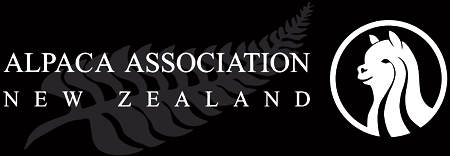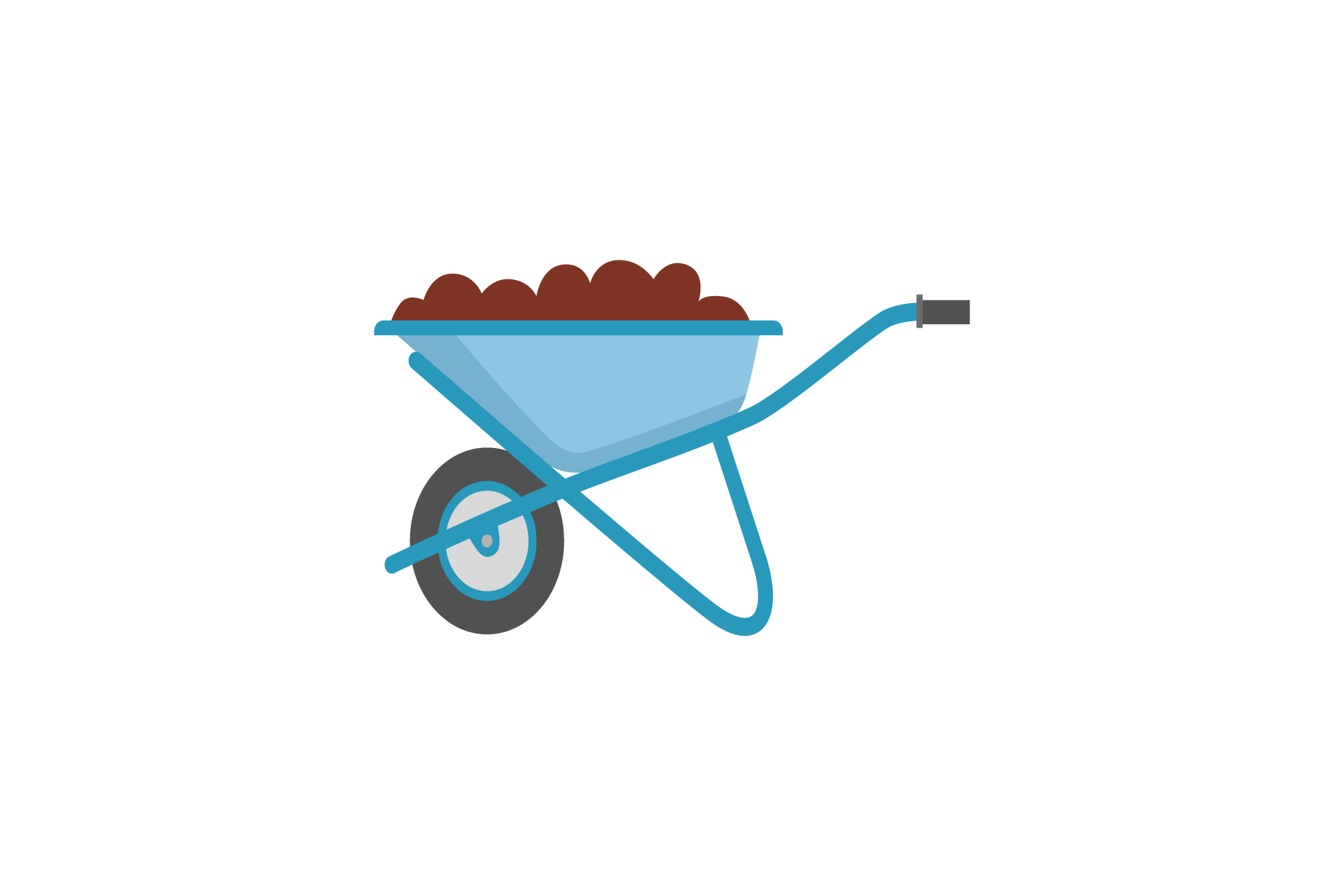Alpaca – Dealing with Dung
By Dr Tim Jenkins – September 2004
AANZ - Note, some of the original links in this article no longer work and are under review.
Alpacas graze and impact the environment in different ways to sheep and cattle. If managed correctly they are probably superior to sheep and cattle not just in terms of the softer foot pressure on the soil and greater feed efficiency, but also in terms of pasture condition.
Why Do Alpacas Not Eat the Dung/Urine Patch Pasture?
I was asked to help explain the issue of pasture not being grazed around dung and urine patches. There are a variety of reasons that can help explain why this lush pasture is not favoured ranging from behavioural avoidance linked to avoiding parasites, through to avoiding the smell, and even sensing the danger of tall pasture that might hide dangerous South American creatures. But as herbage tests reveal, the pasture would actually be quite unpalatable.
From an old (approx. 2-3 month old) dung patch, perennial ryegrass leaf samples were taken. A comparison sample of ryegrass was also taken from the surrounding paddock. The two factors linked with dung/urine patch pasture are potassium % and nitrate (highly available nitrogen – in parts per million - ppm).
Table: Differences in Potassium and Nitrate in Patch Ryegrass
Factor Paddock Dung Patch
Potassium 2.6% 4.8%
Nitrate <100 ppm 3460 ppm
The potassium and nitrate would contribute to a bitter unpalatable taste that livestock can sense even without taking a bite.
The Dung/Urine Patch Issue
The fact that alpacas tend to concentrate their dung and urine has both positives and negatives including…
Positives of Dung and Urine Concentration
- Makes dung collecting easier
- Means a proportion of the paddock is highly improved in terms of root depth and soil biological activity
- Reduces potential for internal parasite spread
Negatives of Dung and Urine Concentration
- Can mean much of the remaining pasture becomes depleted in some nutrients
- Can mean much of the remaining pasture is overgrazed
- Potential for excess nitrogen levels in patch to result in significant leaching of nitrate (an environmental concern as well as a nutrient efficiency issue)
- Patchy looking pasture
As well as the ryegrass herbage tests, we carried out:
- Soil tests from the patch and the surrounding paddock
- Dung nutrient analysis of 2-3 month old dung collected from the pile and of fresh manure With the data gathered we can look at some of the potential issues numbered 1 to 7 above:
- Dung Collecting
It is common practice to collect dung from alpaca paddocks. This helps reduce issue 6 (nitrate leaching) and aids internal parasite management. It leaves the question of how to collect it (being addressed separately on this day with the display of machine technologies) and what to do with the dung (some options are given in this handout for composting and fermentation). Good practice could see the dung being returned to paddocks – perhaps a paddock chosen for regeneration and most ideally not likely to be grazed for three months (it could, for example, have a green manure like oats and lupins or oats and lucerne grown, disced in and resown in pasture – or it could be the next paddock in a rotation to be the hay paddock).
Around the dung and urine patches, the soil is benefiting from the input of nutrient rich organic material. Earthworms are responding and grass roots are deeper and more active. These roots together with the earthworms and other soil biological activity improve soil structure. Though this is potentially outweighed by concerns for other parts of the paddock, good grazing management can see an overall improvement in paddock soil. The aim could be to employ Holistic Management® (see www.succession.co.nz click on “Grazed and Confused in left hand side column) a grazing style which sees intensive grazing for a short period of time followed by a prolonged rest sufficient to allow the most grazed and slower to recover pasture species to recuperate. By just grazing for a few days at a time and then allowing say one to three months recovery time, intestinal parasite issues are reduced and over a period of seven or more rotations, the entire paddock area will receive the dung/urine patch treatment.
The natural behaviour combined with any dung collecting and grazing rotation strategy will all contribute well to reducing the potential for internal parasite issues. Grazing management can also include:
- Grazing with livestock not susceptible to the worms at issue, allowing recovery, and then grazing with young alpaca – the other livestock “clean” the pasture.
- Grazing with young alpaca, allowing recovery, and then grazing with older alpaca – young alpaca are more at threat from internal parasite issues; don’t graze them after older worm burdened animals
- Grazing young alpacas on pasture that has not been grazed for three months prior – at this most sensitive time for worm burden, the most sensitive first year animals are best on such clean pasture.
- Depleted Pasture
If good grazing management can be practiced then pasture depletion may not be a problem. Over time all areas of the paddock are treated the same. Healthy growing legumes (that is not over grazed) can replace nitrogen lost from any areas. If on the other hand, adequate rotation is not possible then much of the paddock can indeed become depleted. Also, if dung is to be regularly removed from the pastures without being returned to the pastures in an even manner over all paddocks then there will be a definite requirement. The main nutrients required will be POTASSIUM, PHOSPHORUS and if legumes are not in good condition then NITROGEN. There will also be some requirement for MAGNESIUM, SULPHUR and potentially some of the trace elements. Nutrient requirements are best calculated on the basis of soil tests (preferably taken in winter) and spring plant tissue tests of white clover only. Take the clover samples from poor performing plants avoiding soil contamination as much as possible and take them when the plants have begun good spring growth but before they have commenced flowering (e.g. October, November).
This issue is best avoided by a good rotational grazing design. Judge the time to regraze a paddock on the true recovery of all grazing species not on just how tall the grass is. A good time is for instance when the oldest leaf on the chicory plants is dying and going to the soil (in the summer) and a similar observation for plantain (in the winter). Try to avoid grazing hard – if much of the tops are gone, the roots suffer – furthermore if the plants do not fully recover before the next grazing, root reserves will be depleted and the next regrowth is even more compromised.
Nitrate leaching from urine patches is a problem enough in dairying and other livestock, but the concentration in a particular area of multiple urine patches could be a concern. Loss from dung will also contribute though the release of nitrogen is slower from these solids. The removal of dung will aid the environmental sustainability of the situation, but simply rotating pastures well and harrowing the dung patches will improve matters. IN FACT MUCH OF THE NITROGEN IS TAKEN UP BY THE LUSH PASTURE, this is shown by the soil and herbage figures in the table below. The available nitrogen (measured by incubating the soil and measuring nitrogen released over time) and the total nitrogen both indicate that the pasture in the patch appears to have absorbed much of the nitrogen – there is no apparent difference in levels. The herbage shows a higher nitrogen status, which can be multiplied by the fact that the pasture dry matter in the patch area was several times that present in the non-patch areas at the time.
Table: Soil and Ryegrass Herbage Figures Relevant to Nitrogen Uptake
Factor | Paddock | Patch |
SOIL | | |
Total Nitrogen | 0.31% | 0.29% |
Available N | 159 kg/ha | 156 kg/ha |
HERBAGE | | |
Nitrogen | 3.5% | 3.9% |
Nitrate Nitrogen <100 ppm 3460 ppm
This is an aesthetic issue but is also a visual cue that some of the above issues may be of concern. As well as practicing appropriate rotational grazing management and spreading the dung better, it is likely to be beneficial to treat the dung patches with a mowing and liming treatment. A suggested protocol is …
Table: Mowing and Liming Treatment for dung patches
Activity | Details | Reason |
Remove Livestock | | Part of Rotational Grazing, avoid stressing the alpacas with machine work and not encouraging them to eat around fresh dung areas. |
Collect Dung | By shovel or machine | Reduce parasite levels, use for composted material, reduce patchiness and pasture quality issues. |
Apply Lime and Salt | 99% Fine limestone and 1% common salt (use cheap agricultural salt from merchants). Apply at 200g (cupped handful) per square meter | lime (calcium carbonate) and salt (sodium chloride) both reduce potassium uptake and help balance the effects of potassium and nitrate resulting in a sweeter, palatable and more balanced pasture (and better balance in the gut) |
Wait for recover | main | pasture | to | e.g. wait for slower recovering species to be at a position where an older leaf is just starting to die and go into the soil. | Maintain good diversity of pasture species; maintain resilience and productivity of pasture (and soil condition). |
Top the patch pasture | Top (mow at high level e.g. 8 cm) mow the patch pasture. | To return some of the high potassium and high nitrate pasture to the ground and to help expose the lower part of pasture to UV to reduce worm parasite levels. |
Reintroduce Livestock | e.g. three days after topping | To take pasture. | advantage | of | the | recovered |
| | | | | | | | | | |
Pasture Species Choice
Improved pasture and livestock performance as well as reduced nitrate leaching can result from good pasture species and cultivar choice. Choices should ideally include a variety to produce a diverse feed with minimal lean periods. In many cases different varieties of the same species will provide dry matter at different times in the season, refer to the merchants information. Some highly recommended species are given below.
Chicory: Variety ‘Puna’ is good for summer production and root depth and other cultivars have better winter production of dry matter. Catches much leached nitrate and also brings phosphorus and other nutrients up. Good levels of copper, selenium and zinc. Tonic effect for livestock.
Plantain: Good companion with chicory (not as deep rooting as chicory but more active in the winter). Also good for trace elements and tonic effect.
Cocksfoot: Deep and fibrous rooted plant. Dry tolerant. As a component in the pasture, helps provide fibre and has a reduced tendency to go lush. Good animal performance as a result.
Timothy and Tall Fescue: These are palatable grasses good for livestock performance and providing a bit of variety without the risk of ryegrass staggers (from the ryegrass endophyte) and reduced issues with mycotoxins and high potassium and nitrate levels as can occur in perennial ryegrass.
Note: in long-term dung patch (e.g. non rotated) or composting areas, chicory can be drilled-in to catch much of the last two years worth of nitrate leaching. Drill in spring to early summer for best results.
Alpaca Dung Contents
Alpaca dung was collected from the 2-3 month old patch described above. A further sample of fresh dung was taken. These samples were analysed for the content of major elements nitrogen, phosphorus, potassium and sulphur, and for the level of organic carbon and moisture. This was to assess the potential for nutrient transfer and the composting value as well as the change in nitrogen level over time. The results are presented below.
Table: Composition of Alpaca Dung (Elements expressed in percentage by weight of material as collected)
| Total Nitrogen (%) | Total Phosphorus (%) | Total Potassium (%) | Total Sulphur (%) | Organic Carbon (%) | Moisture (%) |
Fresh Dung (1 week old) | 1.0 | 0.22 | 0.44 | 0.08 | 10.9 | 72 |
Old Dung (2-3 months old) | 0.6 | 0.17 | 0.16 | 0.06 | 7.5 | 76 |
This means that each tonne of fresh dung includes around 10 kg of nitrogen, 2.2 kg of phosphorus, 4.4 kg of potassium and 0.08 kg of sulphur. Unless dung is distributed evenly or patches are rotated around the paddock, this represents a significant transfer of fertility.
The quantity of nitrogen in the fresh dung is similar to horse manure and is less by fresh weight than cow dung (often around 1.8% N) and chicken manure (2 to 8 % N when fresh).
Composting quality is reduced over time as seen by the nitrogen percentage being almost halved in the 2 to 3 month sample. [Note that the relative values are indications only and based on single samples]. Nutrients are likely to have leached out over time and some nitrogen will have been lost to the atmosphere e.g. as ammonia.
An important composting parameter is the carbon:nitrogen ratio, which was found to be 11:1 in the fresh dung and 13:1 in the old dung.
Hot Composting
Alpaca dung can be conventionally composted. Composting is faster and pathogens and weeds are controlled better if the composting process is hot. To achieve reliable heat there needs to be:
- Sufficient bulk: at least 1m X 1m X 1m
- Not too high (<1.5m) otherwise aeration is reduced
- Not too dry or too moist (consistency of damp sponge - moist but no excess moisture than can be squeezed out)
- Enough nitrogen material but not too much (coming mostly from the dung) – desired ratios given below
- Regular turning (turned each time temperature gets very hot (>60oC) g. weekly for two weeks then again as required)
Compost may be formed after 3 to 8 weeks in the summer and longer in the winter. After forming, it is best “cured” for two months before using on sensitive crops.
The ideal carbon to nitrogen ratio for a quick and high quality hot compost is 25:1 to 30:1. So like most dung, the alpaca dung needs balancing with a carbon rich material such as straw (which will also provide extra bulk for aeration). Wheat straw often has a C:N ratio of around 125:1 Calculating the amount of straw required for a good C:N ratio involves factoring in the bulk density of the materials (around 3000 kg/cubic metre for the dung and 300 kg/cubic metre for the straw).
The calculated ratios for a good compost design would be around
2 parts alpaca dung
3 parts straw
1 part grass clippings
Any failure to heat up could indicate insufficient dung (in which case lift the ratio of dung and or grass clippings). Note that failure to heat up could also be due to insufficient heap size or excess or low moisture content. Check these possibilities.
Aerobic Bokashi (Solid Fermentation)
This uses Effective Microorganisms (EM) a mixture of beneficial microorganisms. EM is available from the NZ Nature Farming Society
For every 10 litres of alpaca dung add:
15 litres (pressed) of straw
5 litres of fresh grass clippings
Mix well (if doing large quantities – can add in thin layers but do not exceed 40 cm in height)
While mixing, water with approx. 3 litres of water with 300 mL of EM (cost around $3) and 300 mL of Molasses dissolved in it.
(Add the water and EM to achieve a consistency of a damp sponge
Stand in a sheltered place on concrete and covered with polythene, sacking or carpet for four days to ten days. Check daily and turn it if the pile is getting hot (>45oC). The pile is ready when it smells sweet and fermented.
When ready, the bokashi can be used as high value mulch (with biological fertiliser value) around crops and trees. This method would be too expensive for using for simply recycling the manure onto the paddocks.
Liquid Fermentation
Fill large (20 L) onion sack with manure and submerge in a 200 L drum of water. Can add 1 L of EM (and optional 1 L molasses) to improve quality of liquid manure. If using EM (sourced as above), seal the container to provide anaerobic conditions. After two months, liquid manure is ready to apply to pasture (after grazing).
References
- succession.co.nz click on “Grazed and Confused” in left hand side column
- EM is available from the NZ Nature Farming Society
About the Author
Dealing with Dung was authored by Dr. Tim Jenkins as part of a joint project entitled: Alpacas: making the transition from a cottage industry to a sustainable pastoral livestock option, between the Alpaca Association New Zealand http://www.alpaca.org.nz/ and funders the Sustainable Farming Fund, Ministry of Primary Industries, New Zealand http://www.mpi.govt.nz
The project leader was alpaca breeder Lindsay Riddle who, together with his wife Sheryl, breed alpacas in Central Canterbury where they also hosted the project’s Canterbury Focus Farm on which the dung and pasture sampling work was done.
Dr. Tim Jenkins was a consultant to the Biological Husbandry unit at Lincoln University, New Zealand . He has worked in the areas of farm system design and soil fertility advice for both crops and pasture with a special interest in farm sustainability.



